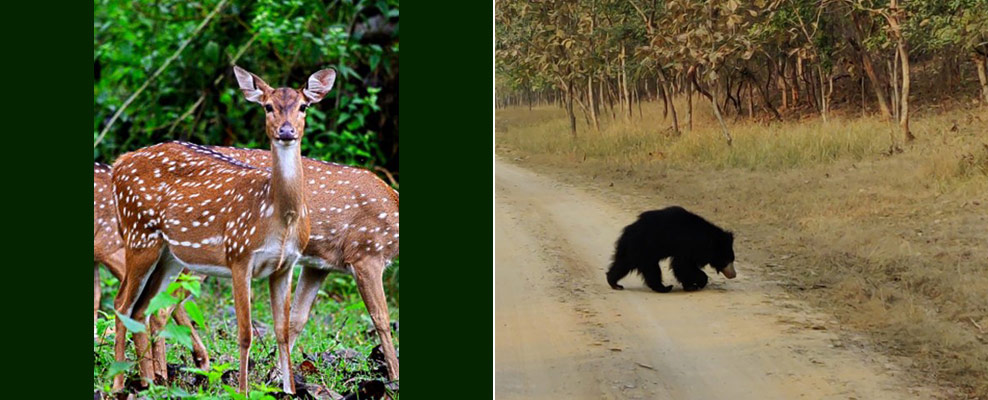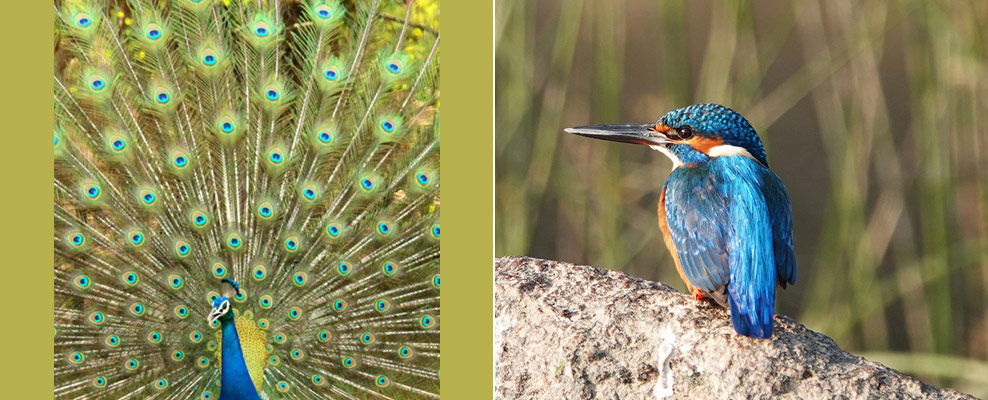The one thing to know about visiting a forest of any sort, a tiger reserve or otherwise, is that we may plan all the nitty-gritty of the trip but can never tell what the forest safari will have in store for us. There could be safaris that turn out to be dull, ones that keep you enticed but don’t really offer prized sightings and finally those that make you pinch yourself in disbelief. The cardinal rule for me though, is to soak in the seeming stillness of the forest where even a micro organism plays a unique part in delivering an ecosystem that is both seamless and eternally sustainable.
The Panna National Park was declared a Tiger Reserve by the Government of India only in 1994. Spreading over the Chattarpur districts of Madhya Pradesh, some of its forest areas were hunting grounds of the erstwhile ruler Maharaja Chatrasaalafter whom the district is named. What makes it a special forest is the unspoilt Ken River (Karnavati before colonization), a perennial tributary of Yamuna that flows right through it for about 55 km and is quite the lifeline of the forest along with its proximity to the Vindhya Hills in the north.
What has also always fascinated me is how the forest officers come up with delightful names for tigers in the forest. Mind you, this is an honor almost solely reserved for tigers. Till now, I haven’t come across a single Indian forest that has names for wild elephants or other wild cats like leopardsor civets, but the tigers all have names. Of the total of 52 tigers inhabiting the Panna Tiger Reserve, the ones currently in sight are Manchali and Kanhaiya. In fact, just as we start our safari, Ram Ratan, our chatty forest officer tells us that we are a day late. That Manchali made a huge sambhar kill the previous day, dragging its meat for all visitors to see. He proudly shares a video of the same captured on his phone.

So though we hear the occasional call of the chital or the spotted deer, the calls are weak and with the big cat away, life seems to be calm in the forest. Our safaris too, all three combined go without a tiger sighting, but not uneventful. Just an hour or so into the safari, we catch one of the most elusive wild animals in a forest – the sloth bear. Barely a few metres from us, it is the best bear sighting I’ve ever had and we seem to be the only jeep parked for the treat. Perhaps which is why, quite uninhibited, the sloth crosses the pathway in front of us again and again, stopping at junctures to dig deep into the ground. Weak of sight but empowered through his very sensitive and large olfactory, he goes deep into the earth searching for termites and sucks them all out. The guides remind us once again that we are to remain absolutely still as the sloth bears are known to charge violently when they feel threatened, which they often do because of poor eyesight.
Moving on towards the periphery of the river, our driver, Shukr Kumar, a quiet, keen-eyed Nepali gent, stops and asks us to focus on the river bank. We do but fail to spot anything other than the lovely Arjun trees. He lends us his binoculars and trains our eye to stop at what from a distance only looks like a piece of logwood. But it isn’t! With the help of binocs, we realise we are gazing at a ghariyal, or a crocodile that has its mouth ajar and is merrily sun bathing. The flawless camouflage gives him a deadly advantage of stealth thus making him a vicious predator by the river. The officer explains that the reptile is likely to sit in that position for a few hours to balance his body temperature.

No visit to the Panna forests can be complete without a boat ride on the Ken. Our hosts, Pugdundee Safaris that run the Ken River Lodge organise a sunset boat ride for us. When we start the sun is a fierce orange, but still fairly high up in the sky. We have over an hour to stay on the river, to catch it come down fully. The river captures a perfect reflection of every bush and tree. Every second is a ready frame. But after a few clicks, I keep my camera away to appreciate the rich stillness, broken only by animated bird call and the lapping of the water by the oars. The boat ride turns out to be an ornithologist’s delight. Even an amateur bird watcher like me is spell struck. We catch birds of every size and color, either still or in flight. Chirpy barbets and babblers, black cormorants and laughing drongos, a stately black stork that has probably made it all the way from Siberia, herons – grey ones as well as pond herons, pretty Indian rollers and striking kingfishers, green bee-eaters and green pigeons, a black shouldered kite as well as a serpent crested eagle and many more, each one magical in its own way. A little deeper into the river we see playful peacocks on rocks and a pair of parakeets trying to build a nest! And if all that hasn’t been an absolute treat already, a giant red sun, casts a stunning reflection on the river as the air fills with bird chatter. I pull out my camera once more to capture the spectacle.
Panna in Hindi is an emerald, a precious stone. Panna Tiger Reserve is precious no less.
Photo credit: Banner Left: SupriyaNewar: Banner Center: thehindu.com; Banner Right: facebook.com/WCTIndia
